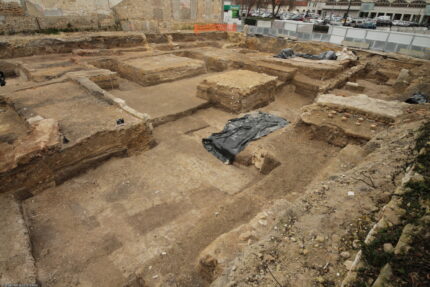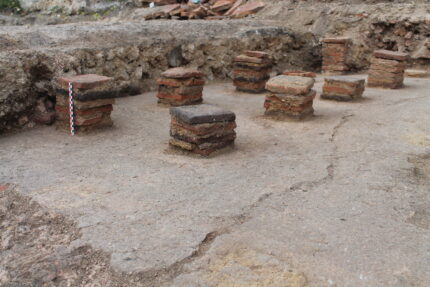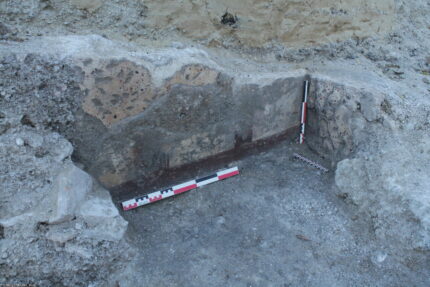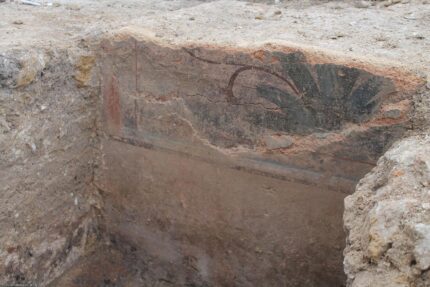Archaeologists from France’s National Institute for Preventive Archaeology (INRAP) have discovered an ancient Roman-era monumental complex from the 2nd-3rd century A.D. in Reims.
The structure consists of two porticoed galleries 65 feet long forming the arms of a U. More than 20 rooms occupy the galleries, from corridors to living spaces with chalk floors and fireplaces. Nine of the rooms were part of the ancient baths. Five of them had a hypocaust underfloor heating system; many of the pilae stacks (square tile piles) that supported the floor are still in place and in excellent condition. In the empty space between the galleries are two rectangular masonry structures that were likely part of garden. One of the two was a basin or fountain. Two pressurized water pipes were found that filled the basin and/or fed the water feature.
Archaeologists have unearthed painted plasters richly decorated with floral motifs. Some pigments used, including a blue similar to “Egyptian blue”, are rare. This discovery characterizes a very easy set. The large number of rooms, their organization, the richness of the decorations, the two large galleries, the hydraulic network and the archaeological elements discovered (ceramics, architectural blocks, copper alloy tableware, etc.) allow two possible interpretations. These vestiges could correspond either to the domus (house) of an extremely wealthy personality or to a spa complex, perhaps public, given the monumentality.
The monumental complex was discovered just 100 meters (328 feet) from the Porte de Mars, a 3rd century A.D. triumphal arch that is the widest surviving Roman arch. The arch was named after a nearby Temple of Mars, and was one of four monumental gates in the city walls.
This was a very ritzy location in the 3rd century, but by the beginning of the 4th, the area was all but abandoned and its buildings quarried for recycled construction materials. The shift may have been caused by the construction of the 4th century walls of Reims. The neighborhood was used for agriculture for another 1400 years, only converting back into a populated area at the end of the 18th century.
Reims was founded as the town of Durocortorum around 80 B.C. It was the capital of the Remi, a Belgic people who became allies of Caesar during the Gallic wars (58-51 B.C.) and their city prospered greatly under Roman rule. At its peak, 30,000 people lived in Durocortorum making it the most populated city north of the Alps.




